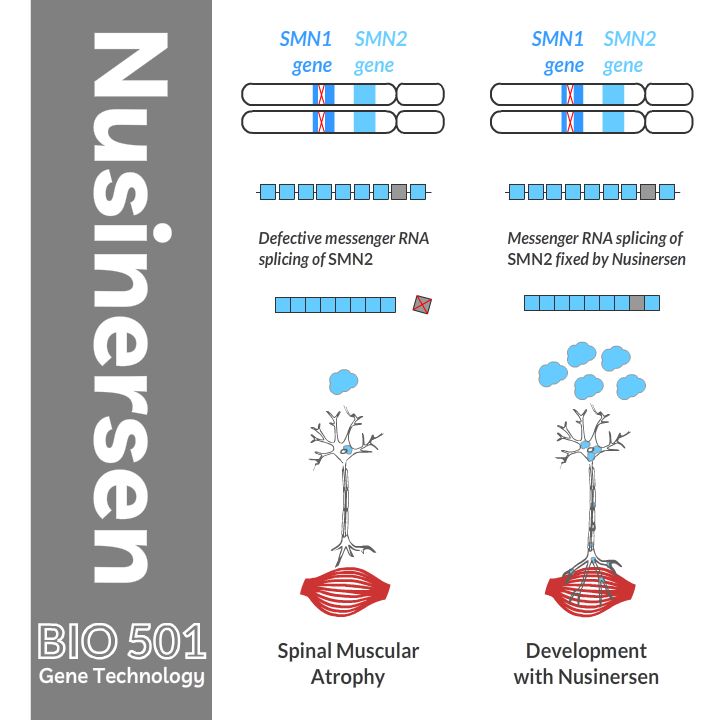
SMA Gene Therapy is a Bargain – Even With a Price Tag of US $2.125 Million
Spinal Muscular Atrophy is a Devastating Diagnosis for Parents
News about SMA is devastating for parents.
One day they are living with the joy of having a new baby. The next day they have to accept that their child will die before the age of 2.
First symptoms of SMA appear around six months of age. Babies show impairments with movement, then progressively start losing their ability to move, talk, and eventually breathe (1).
The most common form of SMA is SMA Type 1. This is the type of the disease that starts at around six months of age. It involves 60% of all SMA cases. Babies with SMA Type 1 never sit and have a life expectancy of less than 2 years.
Children with SMA Types 2 and 3 have later disease onsets and milder symptoms. They grow into adults, but lack basic physical abilities that we all take for granted.
Until very recently SMA was incurable. Disease management involved leg braces, feeding tubes, and breathing machines. Eventual outcome was the same.
Gene therapy turned things around.
Genetics of SMA
SMA is a genetic condition.
It affects functionality of motor neurons, a type of nerve cells that transmit signals from the brain to muscles. In order to develop connections with muscle fibers, motor neurons need to produce a protein called Survival Motor Neuron protein, or SMN.
The main gene responsible for production of SMN protein is called SMN1. Babies born with two mutated copies of the SMN1 gene end up developing SMA.

Nusinersen – The First Effective Treatment for SMA
Nusinersen, marketed as Spinraza, was the first ever treatment for SMA. It was approved by the FDA in December 2016.
Nusinersen significantly slows down disease progression and even improves motor function in a large proportion of patients. (2). In clinical trials, all SMA1 babies that received Nusinersen before the disease onset lived past 25 months. All of them could also sit unassisted and the majority could walk.
The mechanism of action of Nusinersen involves another gene, called SMN2, which also makes SMN protein. Because of a slight difference in genetic code most of messenger RNA transcribed from SMN2 is missing an exon. The resulting SMN protein is rapidly degraded.
Nusinersen is an antisense oligonucleotide. It interacts with SMN2 pre-messenger RNA boosting its splicing into full-length stable messenger RNA that makes functional SMN protein.
As of December 2018, 2600 individuals had been treated with Nusinersen (3). They ranged in age from 3 days to 79 years. Over 95% of individuals who started on Nusinersen remained on it, indicating that the treatment was working.

Problems with Nusinersen
There are two problems with Nusinersen.
First, it is administered by intrathecal injection, directly into the spinal canal.
Initiate treatment involves 4 loading doses. The first three loading doses are done at 14 day intervals. The fourth loading dose is administered 30 days after the third dose.
That is already way too many injections.
Inside the body Nusinersen is degrading with time. It means that patients have to remain on maintenance treatment, getting an intrathecal injection every four months (4).
When a patient does not get a quarterly maintenance dose of Nusinersen, their physical strength and state of well-being start rapidly declining (5).
The second problem with Nusinersen is its price. In the USA, the drug costs $750,000 in the first year, and $375,000 each year after (6). Although most insurance providers do cover the treatment, such price tag sometimes leads to delayed access for patients. For some, it could mean no access at all.
Both problems, the need for injection into the spinal canal, and the lifetime cost of the treatment, have been noticeably reduced in the second SMA drug Zolgensma.
Zolgensma SMA Therapy is a Technological Miracle
Zolgensma is the latest SMA treatment that uses gene therapy to address the root cause of the disease. (7).
For a baby, the treatment involves a one-time blood infusion that is done in 60 minutes.
That’s it. No more SMA.
Zolgensma has been developed by AveXis, now owned by Novartis. In clinical trials babies receiving Zolgensma lived well past the age expected from the natural history of disease progression. They also achieved key development milestones, such as the ability to sit, stand, and walk without assistance (8).
Zolgensma is made from a modified adeno-associated virus. It consists of a viral shell and a piece of DNA with a functional SMN1 gene. After intravenous injection, Zolgensma viral particles travel to the brain where they penetrate blood the brain barrier. Then the modified virus passes through cell and nuclear membranes, delivering the SMN1 gene to the cell nucleus.
Genetic material delivered with adeno-associated virus remains in the cell nucleus on its own without integrating into chromosomal DNA. This minimizes the risk of mutagenic effects of gene therapy.
In non-dividing cells, such as neurons, external piece of DNA with the SMN1 gene can remain for months and years. It will keep producing functional SMN protein and curing the patient from SMA.
There are multiple stories in the news about children with SMA1 who are alive and well, living happy lives after receiving Zolgensma (9, 10, 11).

Zolgensma Price Tag is US $2.125 Million
Zolgensma is often quoted as the most expensive drug ever released (12).
As much as we like to hear stories about greedy CEOs of multinational corporations, the price tag of US $2.125 million has its grounds. SMA is a rare condition. In the USA only 400 babies are born with SMA each year.
The only way we will see new treatments being developed for rare conditions is when pharmaceutical companies get back the money invested in research.
The price is also supported by the uniqueness of Zolgensma. It is a one-off injection that offers drastic improvement for SMA patients. We could compare the price of Zolgensma with the price of lifetime treatment with Nusinersen. In this light Zolgensma looks like a bargain.
Sky-high price tag does create problems with access to the therapy.
As of January 2020, Zolgensma was only covered by 19 insurance companies and by Medicaid in 11 out of 50 states (13). On July 26th 2019 Business Insider published a heartbreaking story about two major insurers, Aetna and Anthem, denying Zolgensma coverage to kids with SMA (14).
Outside of the US Zolgensmsa is not yet approved by regulators. But the price tag has already raised concerns, implying that the therapy will not be readily available for everyone who needs it.
What is often omitted in the discussions of Zolgensma is that there are other treatments for SMA that are currently going through clinical trials. The most advanced of them is Risdiplam developed by Roche (15). Once Risdiplam or any other newer SMA treatment makes it to the market, there will be pressure on AveXis to reduce the price of their product.
Zolgensma is Showing Promise for Older Patients with SMA Type 2
Currently Zolgensma is only approved for patients who are under two years of age.
A new clinical trial initiated by AveXis is investigating the use of the therapy in older patients between the ages of 2 and 5 years old who have SMA Type 2. When left to natural disease progression, many of such patients never stand or walk independently.
Preliminary data announced by AveXis in October 2019 (16) show that SMA Type 2 patients treated with Zolgensma have clinically meaningful improvements in motor function.
Because intravenous dosing of gene therapy can only be given to children under a certain weight limit, in the clinical trial with SMA Type 2 patients Zolgensma is administered into the spinal canal. Unlike Nusinersen, intrathecal administration of Zolgensma is meant to be a one-off event with effects lasting a lifetime.
References
- NIH Genetics Home Reference. Spinal muscular atrophy
- Journal of Managed Care and Specialty Pharmacy. Gene Therapy for Spinal Muscular Atrophy: An Emerging Treatment Option for a Devastating Disease
- Spinraza.com
- Spinraza.com. The Science Behind Spinraza
- SMA News Today. Spinraza Has Impacted My Life More Than I Thought
- The New York Times. Costly Drug for Fatal Muscular Disease Wins F.D.A. Approval
- Zolgensma.com. ZOLGENSMA targets the genetic root cause of SMA
- Novartis. AveXis receives FDA approval for Zolgensma®, the first and only gene therapy for pediatric patients with spinal muscular atrophy (SMA)
- Nationwide Childrens. Gene Therapy for SMA Type 1: Evelyn’s Story
- Ann & Robert H. Lurie Children’s Hospital of Chicago. Gene Therapy Breakthrough for SMA
- SMA News Today. Zolgensma ‘Saved All of Our Lives’: A Family’s Journey Through Gene Therapy
- NPR. At $2.1 Million, New Gene Therapy Is The Most Expensive Drug Ever
- Cure SMA. Zolgensma
- Business Insider. ‘Like we were being forced to gamble with our son’s life’: Health insurers won’t pay for a $2.1 million drug for kids, and parents say they’re running out of time
- Roche. FDA grants priority review to Roche’s risdiplam for spinal muscular atrophy
- Novartis. AveXis presents updated STRONG data at WMS